Hiraizumi’s Cultural Properties
Buried Cultural Properties
A Town Whose Historic Sites Have Awoken from Sleep
Hiraizumi is a town of historic sites. The number of historic sites (lands that hold buried cultural assets) that have confirmed in the town so far is 101. The generation of sites include not only from when Hiraizumi prospered in the 12th century, but various sites from between the Jomon period to the early modern era. They include various types of structures such as temples, shrines, castles, pavilions, residences, roads and fields.
History Etched in the Land
Structural Remains
Underground remains show traces of how buildings and fences were built, how moats were used to encircle locations, how the land thrived, how roads and bridges were constructed, how wells were dug, and how fields were worked; how humans worked the land. This is called “structural remains.”
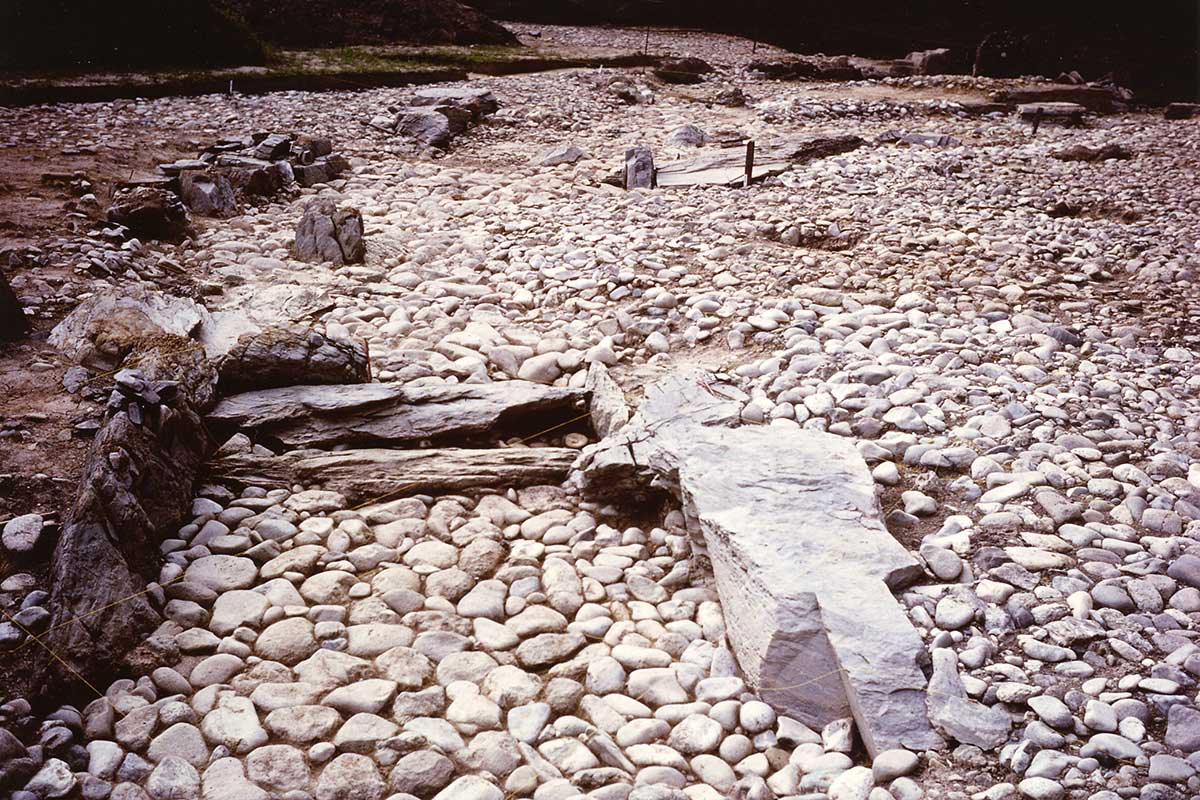
Remains of the Mōtsū-ji Gardens water supply were buried underground, mostly complete
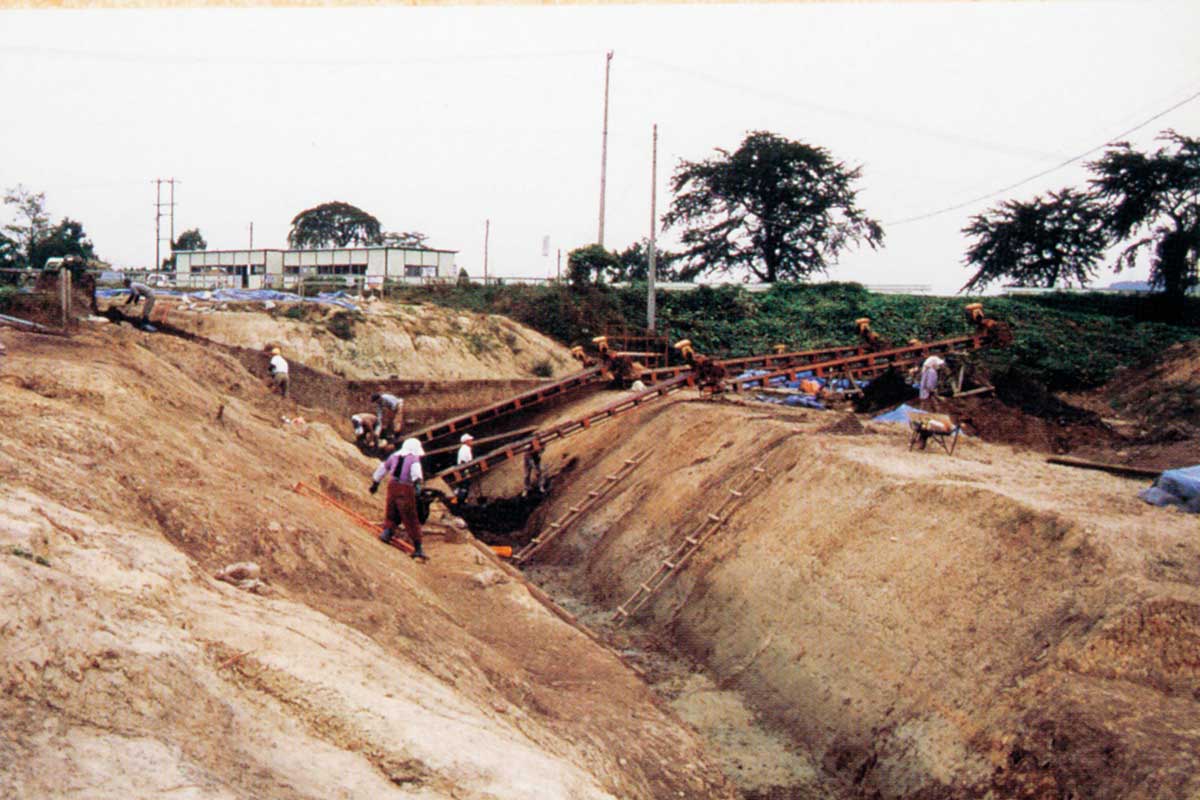
A large moat discovered from the Yanaginogosho site
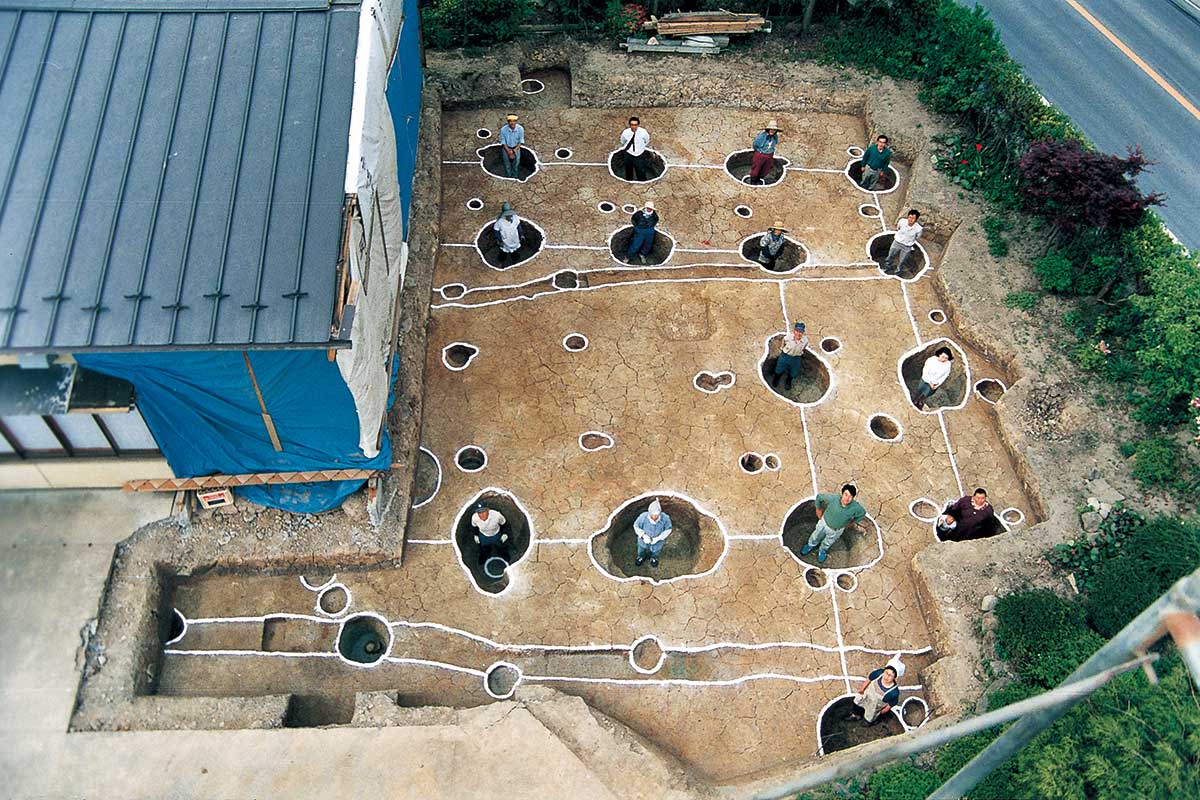
Group of pillar holes at Horitategashira structure site confirmed at Gion I site
Many similar structure sites have been confirmed within the town.
Structures Awoken from Sleep
Excavated items from Hiraizumi sites in Iwate
Important Cultural Properties
Tools and such used by people of the time were buried within the sites. These are called “relics.” One of Hiraizumi’s major features is that such a large quantity of relics from the 12th century has been preserved in good condition. As of 2010, 2,204 items from among those excavated in the town, that are particularly important for understanding the culture and lifestyle of Hiraizumi in its heyday have been designated Important Cultural Properties.
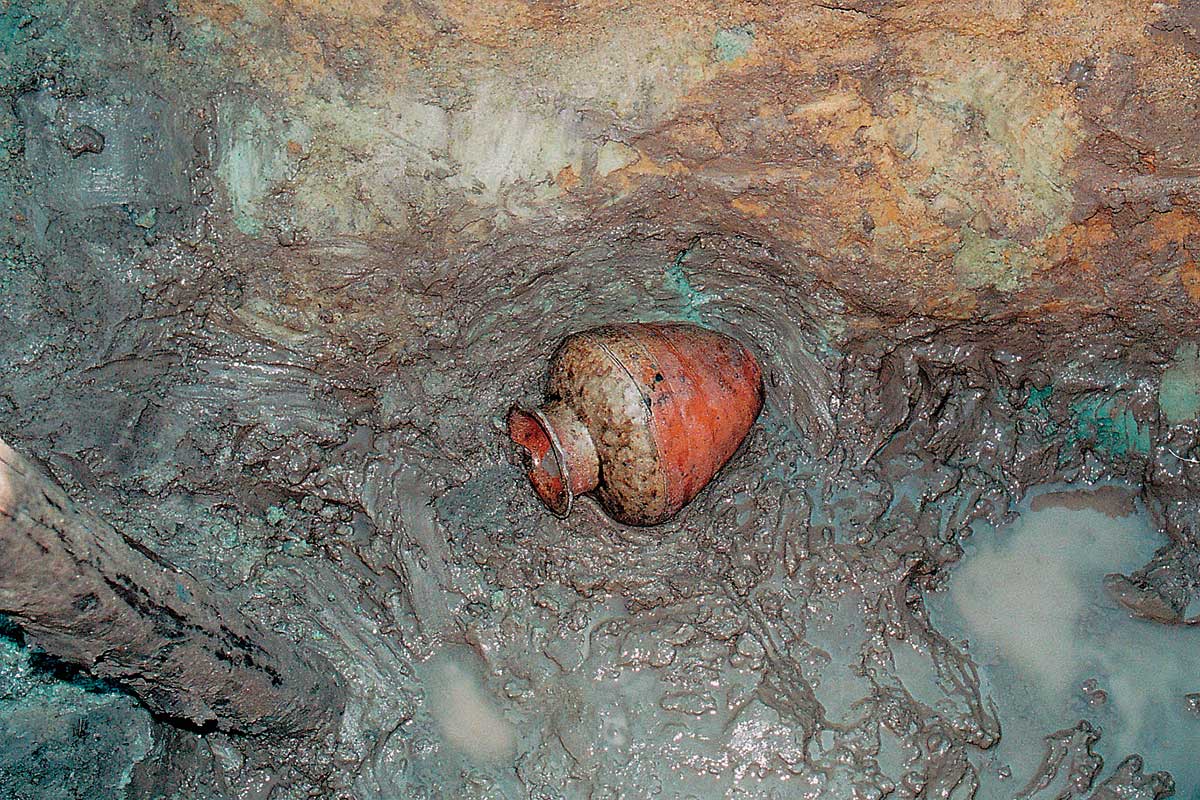
Excavated vase from Tokoname
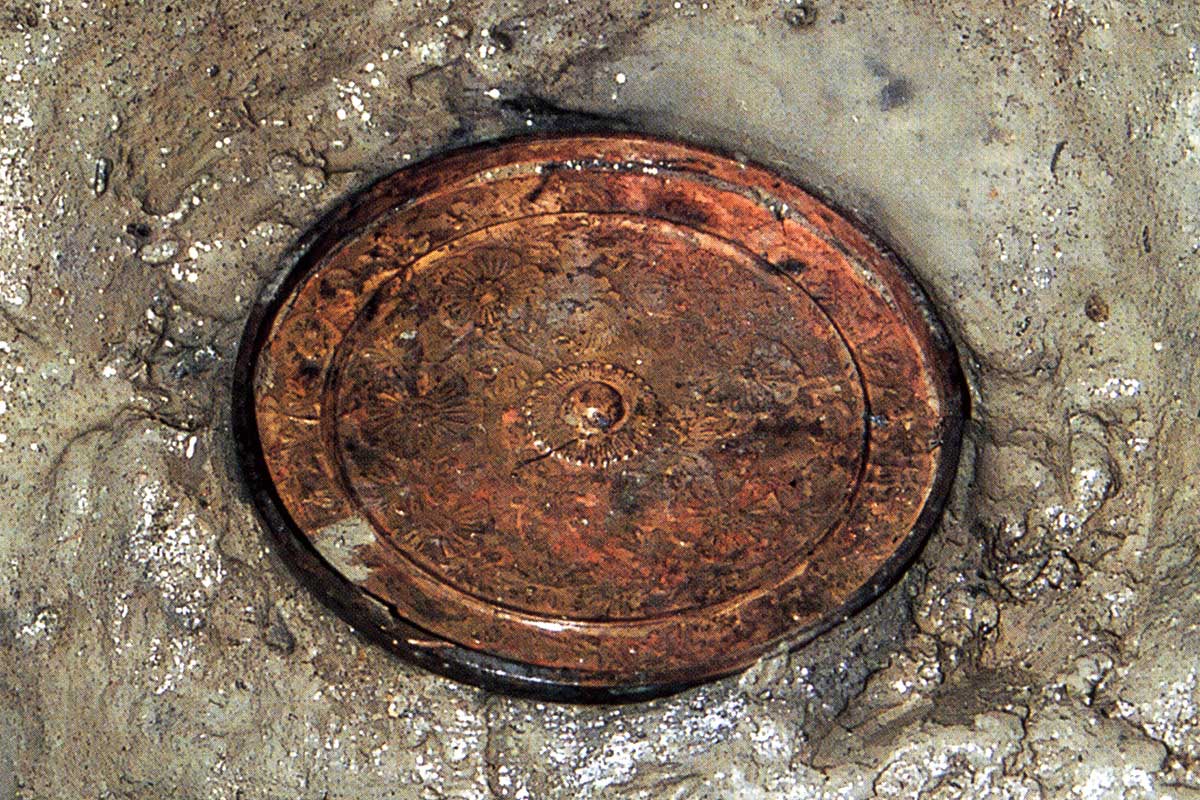
Japanese mirror excavated from the bottom of a pond.
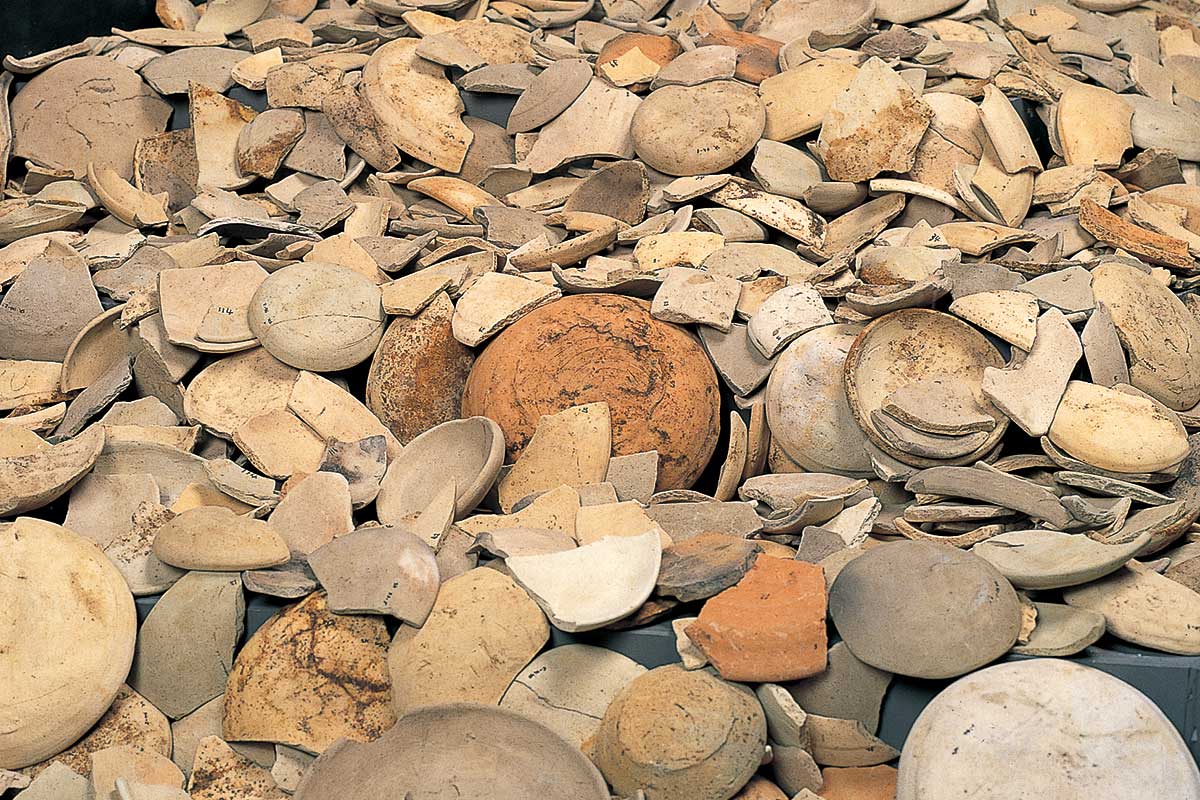
Earthenware (unglazed pottery)
Many items have been excavated from sites around the town. They give us clues in understanding the era of these ruins.
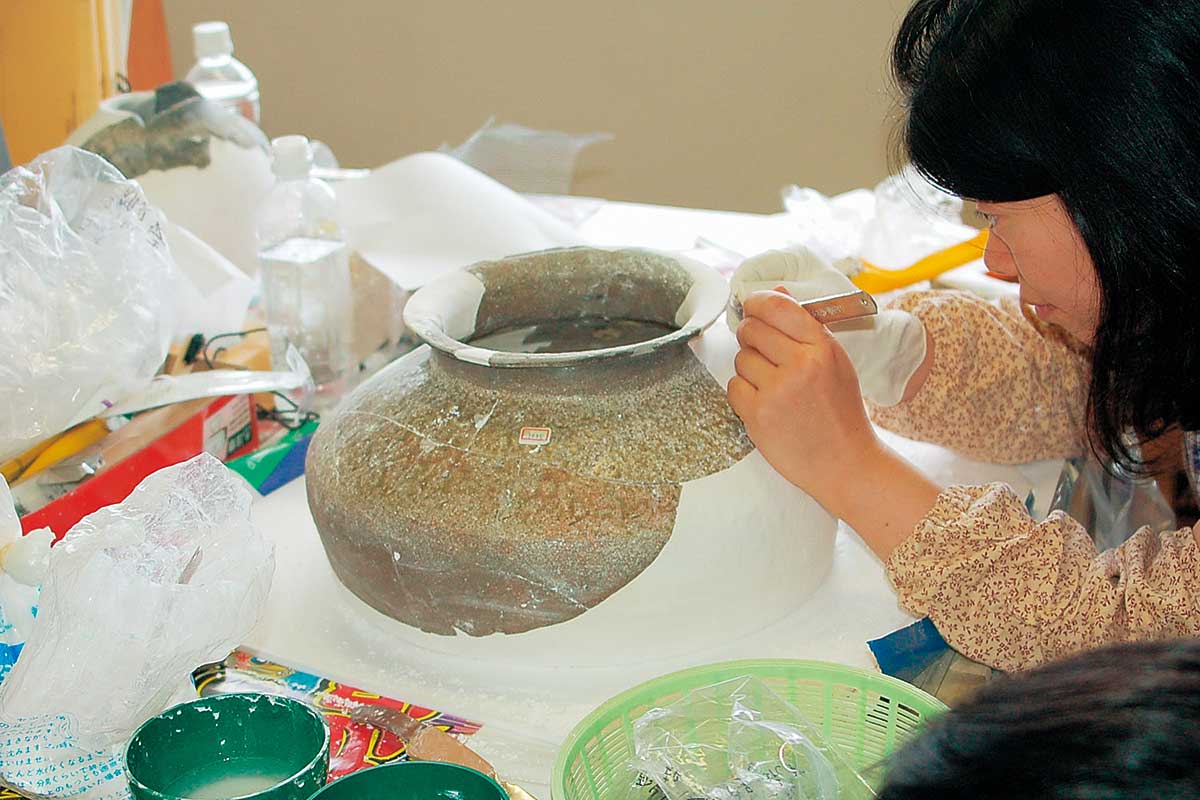
As earthenware, ceramics, etc. are often excavated in fragments, missing parts are repaired.
Restoration work of artifacts
Remains and relics buried underground, in other words, “buried cultural properties,” provide very valuable clues to understanding the lifestyles and culture of people at that time. Therefore, if a new house or road is to be built on a site, preliminary excavations are conducted to confirm the state of the site. Details of what is underground are recorded, and any relics discovered are carefully preserved.